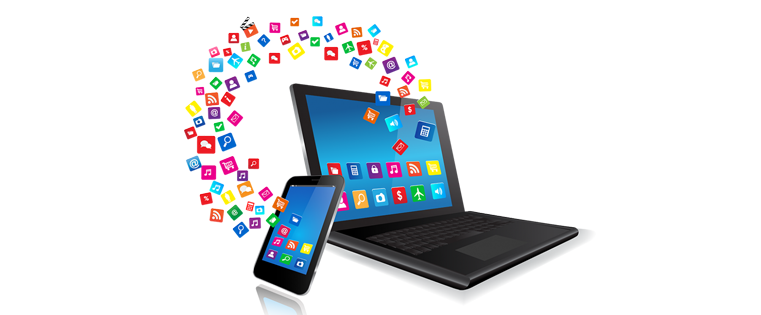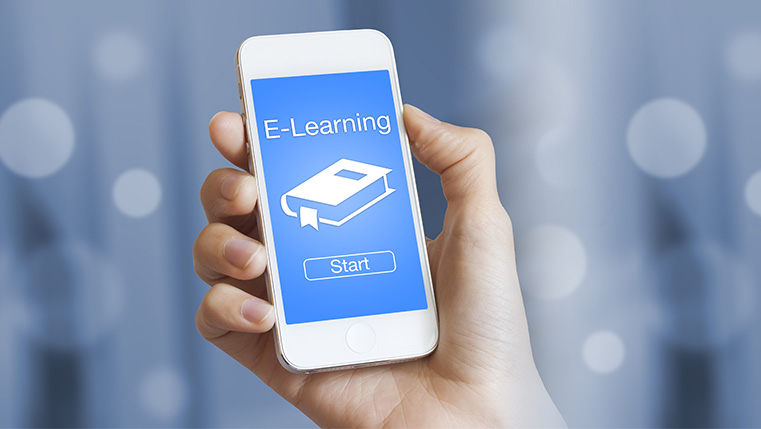Benefits and Limitations of Mobile Learning

According to Ericsson’s forecast, 80% of the world’s population (6.4 billion people) will be Smartphone users by 2021. Another report states that more than four out of five workers now access their work related documents on the move.
This paradigm shift calls for a need to adopt m-learning to train the current Gen workforce. Lots of efforts are already being made to convert huge legacy courses to a mobile-friendly HTML5 format. But is it all just good about mLearning? How much do you know about the limitations of mLearning? This blog aims to show the two sides of the mLearning dime, highlighting its features while at the same time, pointing out its limitations to be an effective learning strategy.
Let’s start with the good things first. Listed here are the USPs of Mlearning as a learning support tool
Provides Easy access:
Mobile learning provides easy access to learning anyplace, anytime, making it more convenient to learners. Learners have the advantage of spending their time spent on traveling, between meetings or during weekends focusing on the subject they want to learn.
Facilitates Collaborative Learning:
mLearning encourages collaborative learning, allowing learners at different locations to get in touch with their peers or others teams to discuss and learn. Social learning is a happening trend which creates a sense of competition and cooperation, which will lock the learners’ attention towards the course.
Boosts Learner engagement:
Training at the workplace mostly consists of verbal and desktop communication, but adapting mobile learning can bring several opportunities to engage the learner on a digital and social level outside of the work. This new dimension will erase the sense of boredom in learners’ mind about the course.
Encourages Self-paced Learning:
No two learners are the same. Each one has his or her own way of understanding the content to learn. With mobile learning, learners are now able to learn in their own style, at their own pace. In a classroom scenario, occasionally, there will be a few learners who wouldn’t have understood the concepts clearly but hesitate to ask for a re-explanation. In mobile learning, nobody knows or cares how many times you revisit the course, which gives you the freedom to do it until you have understood it all.
Address all learning styles:
Mobile learning can fit different learning styles as it allows learners to do the following:
- Reading
- Learning through videos
- Listening to podcasts (Audio)
- Research on the Internet
Enough with the campaigning, let’s move on to the not so good things, shall we? While mLearning brings a lot to the learning table, it certainly has some limitations that you should consider before stepping in the mobile learning planet. Here are a few.
Connectivity could be a miss:
Like I said, mlearning is supposed to happen anywhere, during your commute to office, while you’re travelling to attend a meeting out of town, or even when you are on vacation (some knowledge every now and then wouldn’t hurt). During these times, there may be some connectivity problems while uploading and downloading the information because of poor or totally absent mobile network signals (Any idea how’s the connectivity at the top of the Everest?).
Limited information, a limitation:
Even though the Smartphones of today come with a pretty good screen size, Kindle eBook Readers are making some sound in the market. Why’s that? It’s because they come with an optimized screen size and resolution that provides a comfortable reading experience (even in low-light conditions). Moving on to our Smartphones, it can strain the eyes of the learners if they keep looking at their screens for a longer period. Don’t worry, mlearning is never meant to be a long time relationship between content and the learner. Use microlearning strategies to get the best out of your mlearning efforts.
Device Compatibility:
Just because your new authoring tool is good at converting any content to HTML5, it doesn’t mean your course is gonna look great on every mobile device out there. With the easier availability of manufacturing resources, tens of varieties of mobile phones are coming into the market every day. Your learners may possess a mobile device that may or may not support the type of content you develop. In addition to the cost of these devices, there are monthly data charges from mobile network providers that your learner needs to pay. So downloading large content not only takes time, but also costs a lot. You don’t want your learners to come to you for a raise to pay their increased mobile bills, do you?
Feature-rich mobile, a distraction:
Another reason why people move to Kindle Readers even though their mobile device can offer the same thing is that, they need solitude. These eBook readers come with only one feature which is reading and this enables zero distraction, at least from within the device. How many times does your phone buzz while you’re in a meeting, which distracts your attention at least by 10%? It’s the same with mLearning. While accessing the course through mobiles, if the learner gets a call, SMS, or social media updates, they are bound to get distracted.
Mobile learning standouts as a great resource to facilitate better learning, as long as you pledge to keep its limitations in mind while designing one. Mobile technology helped us by bringing a lot of distant things up-close and has the potential to do the same with our learning programs. With the future of more and more mobile workforce, mLearning could be a savior for many. What do you think?


![Developing a Good Mobile Learning Course [Infographic] Developing a Good Mobile Learning Course [Infographic]](https://blog.commlabindia.com/hs-fs/hubfs/Imported_Blog_Media/strategies-to-develop-mlearning-infographic1.jpg?width=610&height=1324&name=strategies-to-develop-mlearning-infographic1.jpg)



